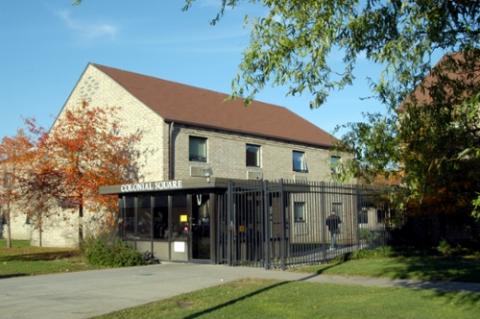By Alissa Anderson
The Broadway adaptation of “Anastasia” carries the tagline “Journey to the Past,” and indeed it is. Behind the stunning sets, dazzling costumes and beautiful music lie antiquated values and a fear of Communism not seen since the Cold War.
The show opens with a fabulous ball held by the royal Romanovs. It is quickly interrupted by shadowy figures equipped with guns and flags bearing the hammer and sickle of the Communist party. The looming army slaughters the family, then the lights come back up on the renaming of St. Petersburg to Leningrad. The ceremony is overseen by Gleb – a charming, bold Communist leader portrayed by Ramin Karimloo.
Throughout the show, Gleb is established as the antagonist, but he makes for a particularly weak villain. His motives are well within reason, his ideals are far from evil and he proves himself to be sympathetic to even the most right-leaning viewer. Despite this, Karimloo plays the part powerfully. In “The Neva Flows,” which tells of Gleb’s history and aspirations to live up to his father’s legacy, emotions run high, and Karimloo’s interpretation of this misunderstood and tormented character recalls his portrayal of Jean Valjean in “Les Miserables.”
In “A Rumor in St. Petersburg,” we meet our golden trio – Anya (Christy Altomare), an amnesiac street-sweeper, Dmitry (Derek Klena), a dashing conman, and Vlad (John Bolton), a former aristocrat. Dmitry and Vlad train Anya to act as the Princess Anastasia, who is rumored to be alive, so that they can take her to her grandmother (Mary Beth Peil) and claim the reward for bringing her home.
Altomare’s performance provides all the elegance of a princess, the raw emotion of a young girl trying to reunite with her family and the grit of a street-sweeper trying to survive. Bolton’s Vlad and Caroline O’Connor’s Countess Lily provide for comic relief, first separately, then even better together.
While many musicals end the first act with a powerful ensemble number, “Anastasia” breaks away from the norm. “Journey to the Past” is a show-stopping number, sung by Altomare alone. Her stage presence and strong, clear voice inspire powerful emotion and fill the theater in a way that solos often cannot. The classic song from the 1997 animated movie is simply stunning and left a significant portion of the audience in joyful tears as the curtain closed and the lights came up.
The second act takes place in Paris as Anastasia, guided by Dmitry and Vlad, tries to make an audience with her grandmother. The curtain rises on “Paris Holds the Key,” the vibrant ensemble number absent from Act I. It’s worth noting that the ensemble in “Anastasia” is tight, powerful and important.
Lyrica Woodruff, in her Broadway debut, is a stand-out performer both as an ensemble member and dancing as Odette in “Swan Lake,” portrayed in “Quartet at the Ballet.” Woodruff draws the eye to herself in the best possible way whenever she is onstage. Despite her status as a newcomer, she is a professional in the highest order and is most certainly a star on the rise.
In the end, we get a message of compromise and that “happy ending” that princess stories are so famous for. Frankly, it doesn’t work here. The show spent two hours pitting Anastasia against Gleb and the idea of Communism, only to have their final meeting fall flat. It’s nice, sure, but it is highly anti-climactic and made for a disappointing ending.
Despite this, “Anastasia” proved itself to be one of the most beautiful shows on Broadway. It is emotional, riveting, elegant and overall simply gorgeous. The show’s design is aesthetically pleasing in a way that I have never seen before. A dancer myself, I was nearly brought to tears by the sheer beauty of the choreography and its execution.
The anti-Communist sentiment felt inappropriate and old-fashioned at this particular time, but the other aspects of the show made it impossible not to adore. Any performer should see “Anastasia,” even if only as an example of what truly fine theatre can be.







